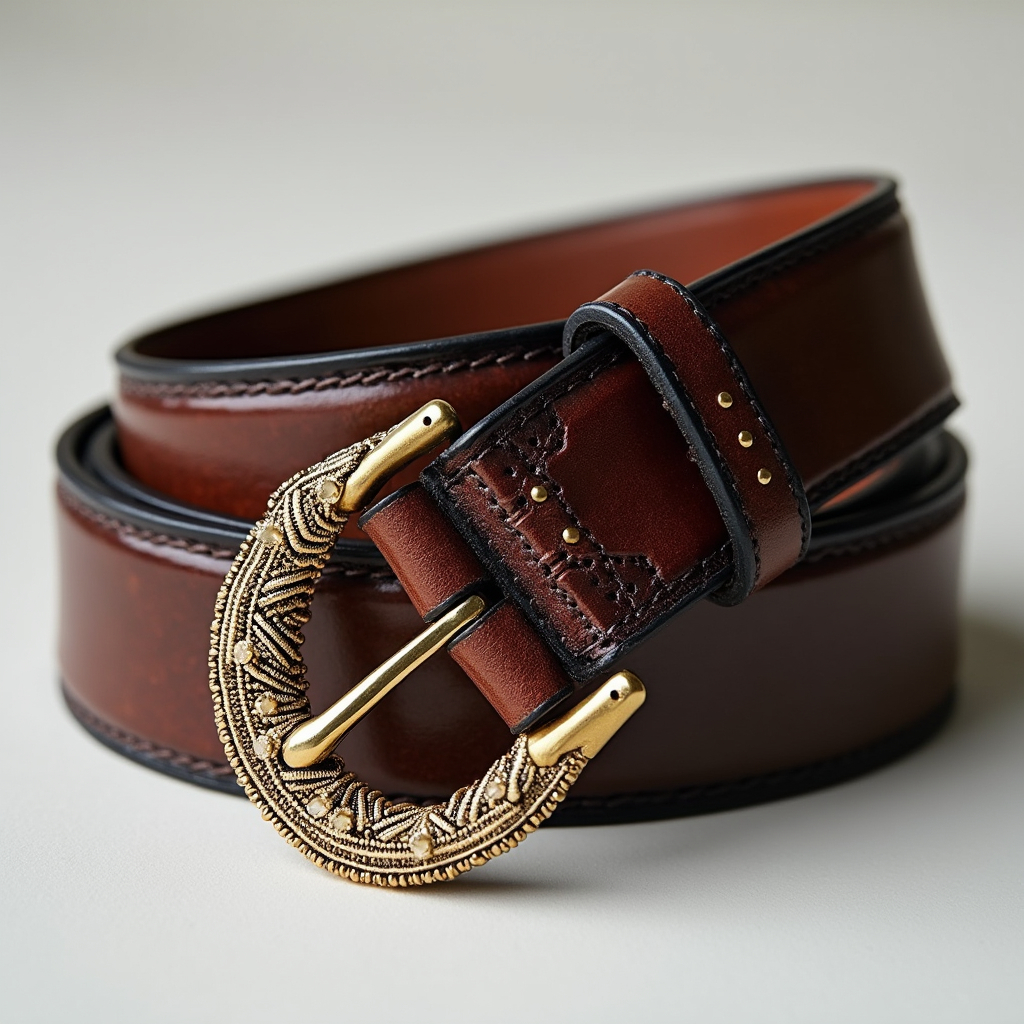The Environmental and Ethical Challenges of Fast Fashion
The fashion industry stands at a critical crossroads. While providing affordable style options for millions, conventional fast fashion has created substantial environmental and social costs. According to the United Nations Environment Programme, the fashion industry is responsible for 8-10% of global carbon emissions and nearly 20% of global wastewater, making it one of the most polluting industries worldwide.
For consumers concerned with both style and ethics, this presents a dilemma. Many turn to replica items as an affordable alternative to luxury prices, but this approach doesn't address the underlying sustainability issues in fashion consumption. Fortunately, a growing movement of sustainable fashion alternatives offers ethically-minded consumers more conscientious choices.
Understanding Fashion's Impact
Before exploring alternatives, it's important to understand the full scope of conventional fashion's environmental and social footprint:
Environmental Costs
- Resource consumption: Producing a single cotton t-shirt requires approximately 2,700 liters of water—enough for one person to drink for 2.5 years
- Chemical pollution: Textile dyeing is the second largest polluter of clean water globally
- Microplastic shedding: Synthetic garments release microplastics into waterways with each wash
- Waste generation: Over 92 million tons of textile waste is created annually, with the equivalent of one garbage truck of textiles landfilled or incinerated every second
Social and Ethical Concerns
- Labor conditions: Many garment workers earn below living wages and work in unsafe conditions
- Exploitation risks: Fast fashion supply chains have been linked to forced labor and child labor in certain regions
- Community impacts: Textile manufacturing can deplete local water resources and create hazardous living conditions near factories
"The real cost of your clothing is not the price tag, but the environmental and human impact of its journey from raw material to wardrobe." — Fashion Revolution
Sustainable Fashion Philosophies and Approaches
The sustainable fashion movement encompasses several complementary philosophies, each addressing different aspects of the fashion industry's impact:
Slow Fashion
Contrasting directly with fast fashion's rapid turnover, slow fashion emphasizes:
- Timeless design over trend-driven styles
- Quality and durability over disposability
- Thoughtful consumption based on need rather than impulse
- Connection to makers through transparent supply chains
Slow fashion brands typically produce fewer collections per year, focus on classic designs with longevity, and encourage consumers to build wardrobes around versatile, lasting pieces.
Circular Fashion
Addressing fashion's waste problem, circular fashion aims to create closed-loop systems where:
- Materials are recyclable or biodegradable at the end of their useful life
- Products are designed for disassembly to facilitate recycling
- Waste becomes a resource through innovative recycling technologies
- Business models shift from ownership to service (rental, subscription, repair)
Circular fashion brands consider the entire lifecycle of garments from design through post-consumer use, aiming to eliminate the concept of "waste" entirely.
Ethical Fashion
Focusing on the human dimension, ethical fashion prioritizes:
- Fair wages and safe working conditions throughout the supply chain
- Transparency about who makes products and under what conditions
- Worker empowerment through skills development and fair labor practices
- Community support in regions where manufacturing occurs
Ethical fashion brands often obtain certifications like Fair Trade or participate in initiatives such as the Worker Rights Consortium to verify their labor practices.
Sustainable Alternatives to Consider
Conscious Consumption Strategies
The most sustainable approach begins with changing consumption habits:
The Capsule Wardrobe Concept
A capsule wardrobe consists of a limited number of versatile, high-quality pieces that can be mixed and matched for multiple occasions. Benefits include:
- Reduced total consumption through careful curation
- Higher quality per item due to concentrated spending
- Simplified decision-making and reduced "wardrobe stress"
- Greater wear per garment, improving cost-per-wear economics
To create a capsule wardrobe, focus on versatile basics in a cohesive color palette, ensuring each piece works with multiple others.
"Buy Less, Buy Better" Philosophy
This approach shifts spending from quantity to quality:
- Investing in fewer, higher-quality garments that last longer
- Researching brands' practices before purchasing
- Considering cost-per-wear rather than just purchase price
- Emphasizing versatility and timeless style over trend-chasing
While initial costs may be higher, the long-term economics often favor this approach when durability and wear frequency are factored in.
Secondhand and Vintage Options
Extending the life of existing garments is among the most impactful sustainable choices:
Curated Vintage Platforms
Beyond traditional thrift stores, specialized vintage retailers offer carefully selected pre-owned fashion:
- Vestiaire Collective: Authenticated luxury secondhand platform
- TheRealReal: Consignment service for designer items
- Beyond Retro: Curated vintage collections focusing on distinct eras
These platforms extend the life of high-quality items that would otherwise be discarded, while offering access to unique pieces not found in current retail.
Peer-to-Peer Marketplaces
Digital platforms have revolutionized person-to-person clothing exchange:
- Depop: Social marketplace popular with younger consumers
- Poshmark: Community-driven platform with negotiation features
- Vinted: Peer-to-peer marketplace focused on everyday fashion
These platforms create circular economy opportunities by connecting buyers and sellers directly, extending garment lifespans while providing affordable options.
Rental and Subscription Services
The sharing economy has extended to fashion through innovative business models:
Occasion Wear Rental
For rarely-worn formal attire, rentals offer practical sustainability:
- Rent the Runway: Pioneer in designer dress rentals
- Hurr Collective: Peer-to-peer designer rental platform
- By Rotation: Community-based fashion rental app
These services increase the wear-per-garment ratio for occasion pieces that might otherwise be worn just once or twice.
Everyday Wear Subscriptions
Beyond special occasions, some services offer rotating wardrobes for daily use:
- Nuuly: Monthly clothing rental subscription
- Fashion Library: Membership-based clothing library concept
- For Days: Closed-loop T-shirt subscription with take-back program
These models reduce overall production needs by serving multiple customers with the same garments over time.
Emerging Sustainable Brands
For new purchases, a growing ecosystem of sustainable brands offers conscientious options:
Transparency-Focused Brands
These companies provide comprehensive information about their supply chains:
- Everlane: "Radical transparency" approach to pricing and production
- Reformation: Detailed sustainability reports and factory information
- Asket: Full cost breakdowns and impact receipts for products
These brands enable consumers to make fully informed choices about the impact of their purchases.
Innovative Materials Pioneers
Material innovation offers exciting pathways to reduced environmental impact:
- Pangaia: Scientific research-based materials like seaweed fiber and grape leather
- Stella McCartney: Luxury innovation with mushroom leather and other plant-based alternatives
- Veja: Sneakers using wild rubber and recycled plastics
These brands demonstrate that sustainability can drive innovation rather than limiting it.
Extending Garment Lifespan Through Care and Repair
A crucial but often overlooked aspect of sustainable fashion is proper maintenance:
Garment Care Best Practices
Simple changes to care routines can significantly extend clothing lifespans:
- Washing less frequently: Many items need cleaning less often than commonly believed
- Cold water washing: Reduces energy use and preserves fabrics
- Air drying: Extends garment life while saving energy
- Proper storage: Appropriate hangers, folding techniques, and seasonal storage
The Repair Renaissance
A revival of repair culture offers both sustainability and customization benefits:
- Visible mending: Decorative repair techniques that celebrate rather than hide fixes
- Repair cafés: Community spaces offering tools and expertise for fixing clothes
- Brand repair programs: Companies like Patagonia and Nudie Jeans offering lifetime repairs
Learning basic repair skills transforms consumers from passive buyers to active participants in extending product lifespans.
Making Informed Choices: Tools and Resources
Navigating sustainable fashion options requires reliable information:
Certification Systems and Standards
Several independent certifications help verify sustainability claims:
- Global Organic Textile Standard (GOTS): Certifies organic status of textiles
- OEKO-TEX: Tests for harmful substances in textiles
- B Corporation: Assesses companies' overall social and environmental impact
- Fair Trade Certified: Verifies fair labor practices and community benefits
These third-party verifications provide accountability and reduce greenwashing risks.
Digital Tools for Conscious Consumers
Technology has made sustainable shopping more accessible:
- Good On You: App rating brands on ethical and environmental impact
- DoneGood: Chrome extension suggesting ethical alternatives while shopping
- Renoon: Sustainable fashion search platform aggregating ethical brands
These tools simplify the research process, making sustainable choices more convenient.
Balancing Sustainability and Personal Style
The sustainable fashion movement has evolved beyond its early aesthetic limitations:
Finding Your Sustainable Style Identity
The diversity of sustainable options allows for personalized approaches:
- Vintage-centered: Building a wardrobe around unique historical pieces
- Minimalist: Embracing capsule principles with high-quality basics
- Artisanal: Supporting craftspeople creating handmade, small-batch items
- Tech-forward: Exploring innovative materials and production techniques
Sustainability doesn't require a uniform aesthetic—it's compatible with diverse personal styles.
The "Perfect is the Enemy of Good" Principle
For many consumers, sustainability is best approached as a journey rather than an absolute:
- Making incremental improvements rather than demanding immediate perfection
- Focusing on high-impact changes that align with personal priorities
- Building awareness and evolving practices over time
"We don't need a handful of people doing zero waste perfectly. We need millions of people doing it imperfectly." — Anne-Marie Bonneau
Conclusion: The Evolving Landscape of Sustainable Fashion
The alternatives to conventional fast fashion and luxury replicas continue to expand, creating more accessible entry points for ethically-minded consumers. From secondhand marketplaces to innovative materials to repair-focused communities, the sustainable fashion ecosystem offers diverse pathways to reduced environmental and social impact.
This evolution represents a fundamental shift from fashion as pure consumption to fashion as conscious participation—where consumers become active stakeholders in creating a more sustainable industry through their choices, care practices, and advocacy.
By exploring these alternatives, consumers can develop a personal approach to sustainable style that aligns with their values, budget, and aesthetic preferences while contributing to positive change in an industry undergoing profound transformation.





Reviews (8) Ask a Question
SustainabilityNewbie
March 2, 2025 at 8:30 amI've been trying to shop more sustainably after reading this article. Has anyone tried any of the recommended ethical brands mentioned? How do they compare to luxury in terms of quality and aesthetics?. By the way, I found some interesting options on https://www.tjluxury2020.com/ worth checking out.
BeachEthics
March 5, 2025 at 1:20 pmDoes anyone have recommendations for sustainable swimwear brands that have a similar aesthetic to designer styles but with ethical production?
QualitySeeker
March 9, 2025 at 11:15 amAnyone know of sustainable alternatives to luxury accessories like bags and wallets? Looking for something high quality that will last years.
Robert Wong
May 13, 2025 at 3:11 pmquality difference between $50 vs $100 rep shirts?
Sarah Johnson
May 13, 2025 at 3:11 pmCotton blend instead of pure cotton on many reps, feels different.
Robert Wong
May 13, 2025 at 3:11 pmpattern matching on rep shirts with designs - good or bad?
Amanda Patel
May 13, 2025 at 3:11 pmlooking for good rep hoodies for winter, suggestions? Reference: https://www.tjluxury2020.com/
Robert Wong
May 13, 2025 at 3:11 pmare logos screen printed or embroidered on higher tier reps?
James Wilson
May 13, 2025 at 3:11 pmpattern matching on rep shirts with designs - good or bad?
Ryan Taylor
May 13, 2025 at 3:11 pmPattern alignment is where budget reps really fail.
Ask a Question or Leave a Review